Most people have at least heard of the Decorah, Iowa eagles. Their webcam went viral and the exposure they get is truly world-wide. Unfortunately one of the eaglets from this year, D12 (pictured above and the photo was provided from the Raptor Resource Project for use) , was electrocuted this week when it landed on top of a power pole which was not corrected to be raptor-proof.
Here are a few stories:
Electrocuted Decorah eagle’s feathers to be used in Native American religious services
Decorah Eaglet Found Electrocuted
Decorah eaglet hatched in 2012 found electrocuted
The USFWS has a great publication on this issue which can be viewed HERE.
So, onto my own run in with this hot topic subject. Tuesday night, July 3rd, I was sitting in the living room when the phone rang. Melinda answered it and immediately brought me the phone. "I think it's the Raptor Center" she said. Usually I am pretty excited to get a call as I know it will be another chance to give back to mother nature. This was no different. I went through the usual conversation with the staffer from The Raptor Center at the U of MN. What is it? "An eaglet form this year." Is it contained? "Yes, they have it in a box." "Where is it?" "Buffalo" she replied. We have about 12 nests within 25 miles so no big deal. When she gave me the address, my heart sank. I knew it was from my favorite nest not more than 2 miles from my home. I hold this nest in a special place personally and I'll get to why in a moment.
I knew this day would come at some point. I am very familiar with all of the nesting bald eagles within 25 miles of my home. The reality of the matter is no different than being a volunteer fireman in a small town, Bad things are going to happen to your friends and neighbors....but you are trained to be there in their time of need.
We quickly gathered the gear I needed and headed out the door. I called the landowner who had the eagle to confirm the address and the condition of the eaglet. It took me less than 10 minutes to arrive. When we pulled up, I saw a large pet crate, 4 people who were obviously hot and sweaty from being out in the near 100° heat index air. I noticed 3 of them had obviously been out in a slough as they were covered with pond weeds. After the usual introductions, I started to gather information the vet at The Raptor Center (TRC) would need. Turns out one of the eaglets was already dead...from electrocution from landing on an uninsulated pole near the nest. The eagle I was inspecting nearly suffered the same fate on a different pole. The same pole which had killed another eaglet a couple of years prior.
A quick assessment showed the eaglet to have no outwardly apparent injuries but was very exhausted and sluggish. Evidently several people had heard the zap and some even saw the bird go to the ground. First attempts to locate the bird were not successful but a couple of the neighbors did find it out in the pasture where the killer pole is located. When they attempted to catch the eagle, it tried it's hardest to make it back to the nest several hundred yards to the northeast. It was not successful. It ended up in the water of the slough under the nest where thankfully it was corralled and brought to safety before it drowned.
I need to back up a minute and tell you the hardship story of this pair of nesting adults. I started watching this pair in 2004. Over the years they have built 4 different nests all in the same general area and have always been successful in hatching eaglets. In our time living on Little Pulaski Lake, we would welcome the evening flyover as one and sometimes both eagles would pass over on their way over our lake, over Lake Constance, and back to their nest. In the late ice fishing season, you need to watch your fish otherwise the male will come steal them if you turn your back and guaranteed the first warm sunny day in April you will see the female returning to the nest with a large Garter snake (something she evidently enjoys hunting for).
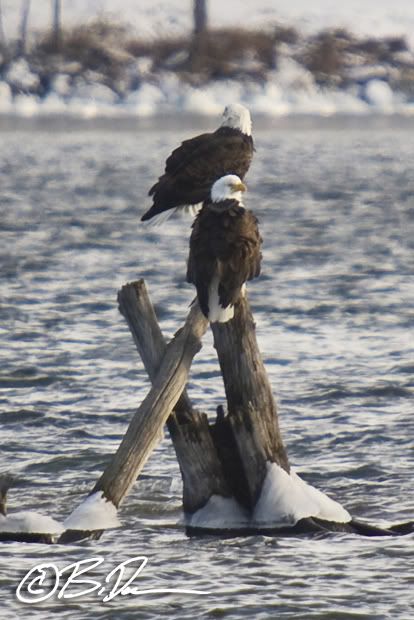
In fact, they would stay around pretty much all winter.
Tragedy struck in 2010 when one of their offspring was electrocuted on the pole in the pasture.
In 2011, they decided to rebuild their nest further from the pasture but closer to the road on the edge of a small pond.
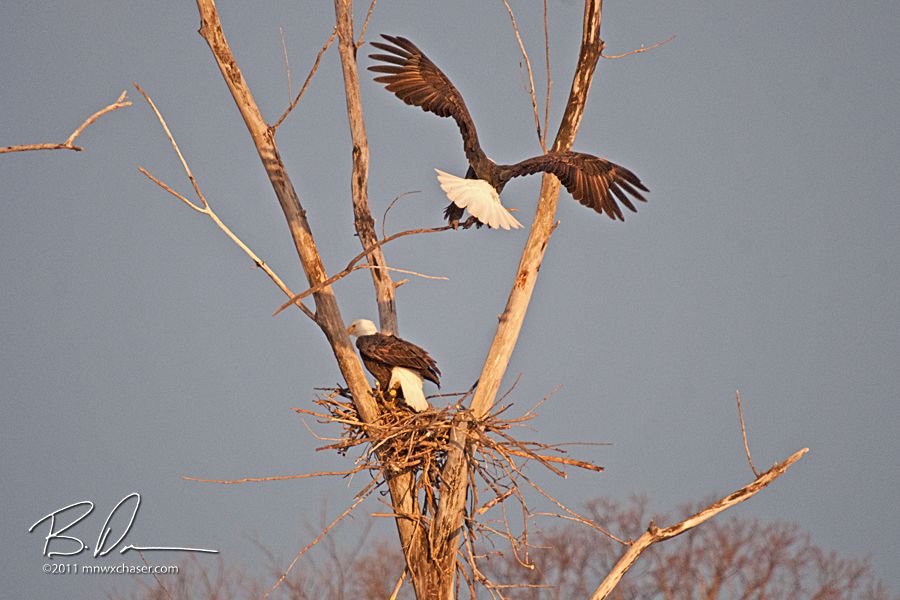
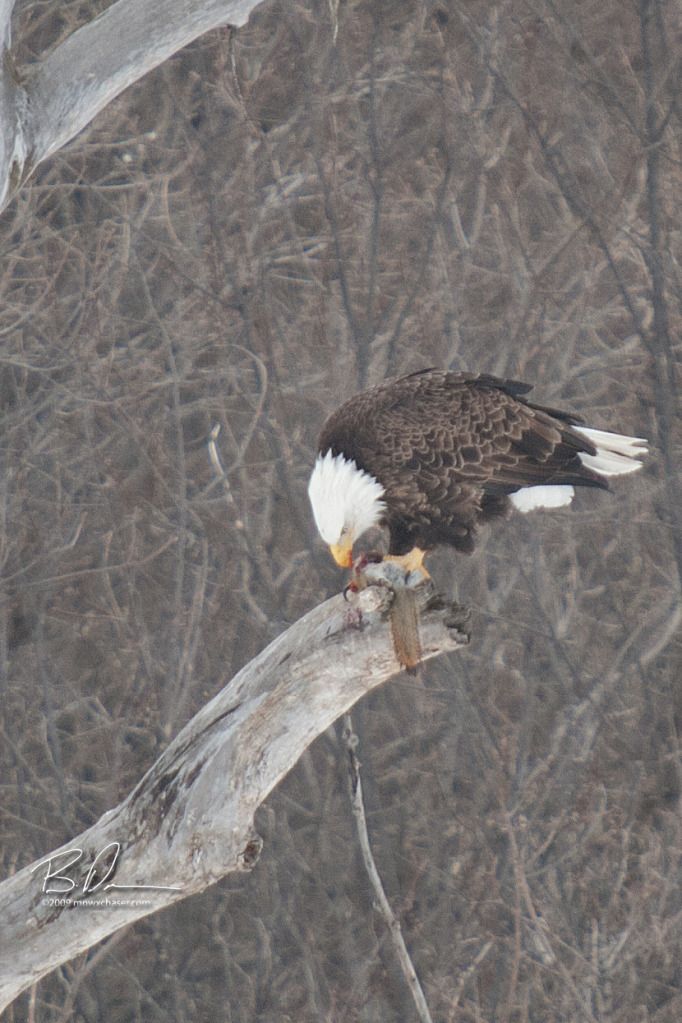
They spent the spring season doing what eagles do, eating....
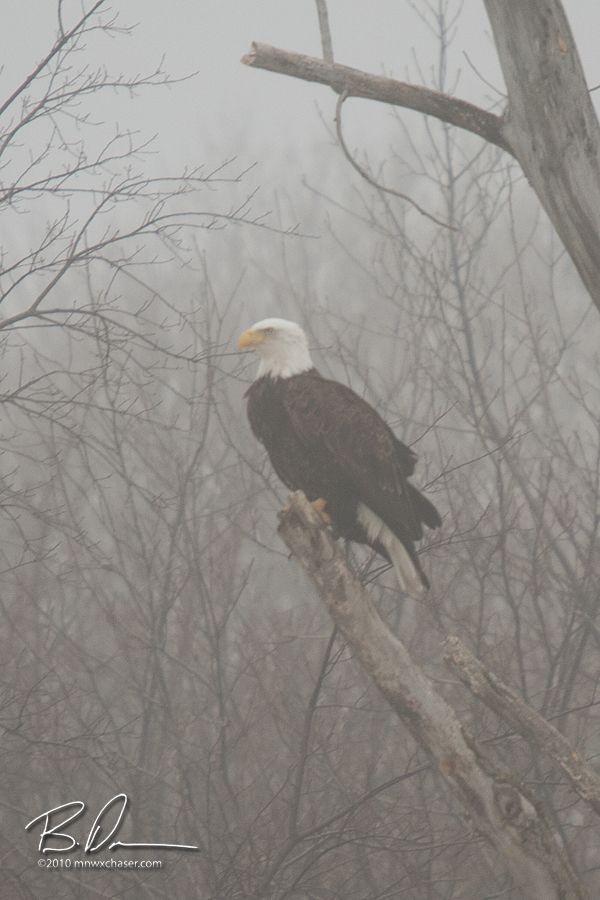
...and hanging out in the fog as temperatures warmed with nesting getting into full swing. They hatched two more eaglets, got through branching and everything looked good for them as fledging was only days away.

Until July 1, 2011. A major wind storm swept through Minnesota cutting a path of destruction from southwest to northeast.
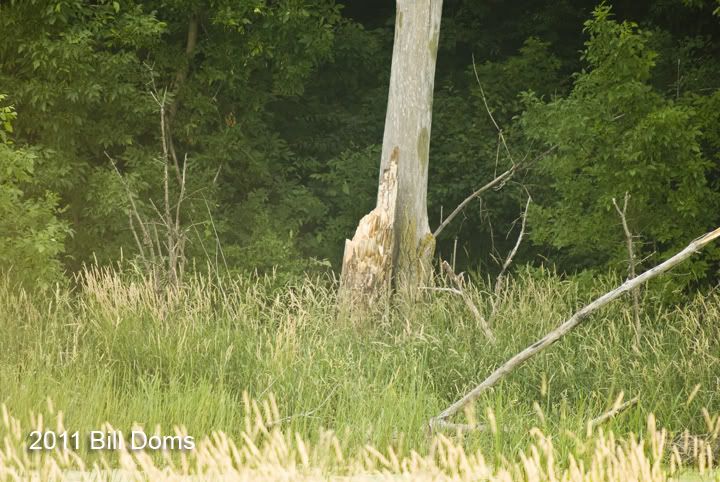
The eagles were caught in the cross hairs of the storm and the nest was destroyed as the wicked winds toppled trees across the area including the one supporting their nest.
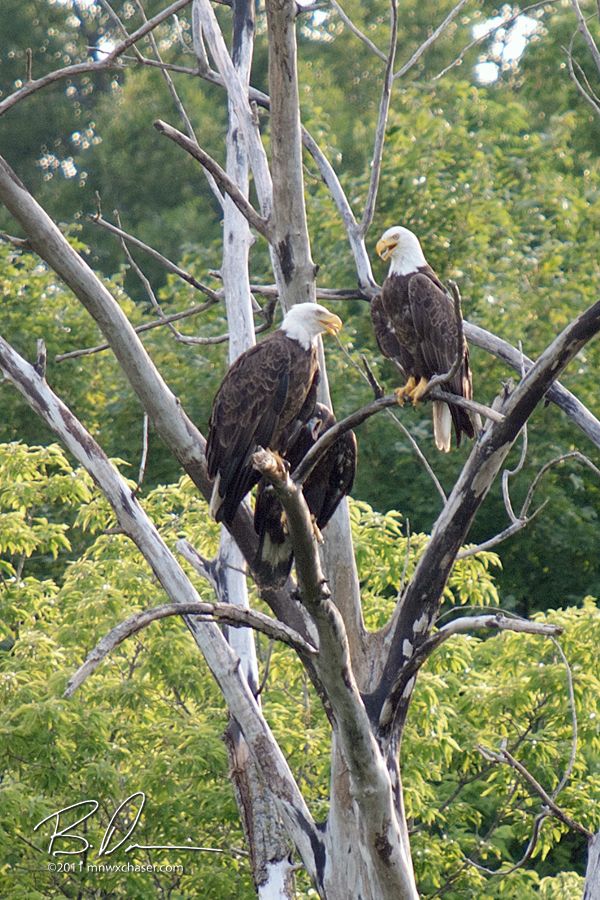
One eaglet survived the fall. One did not. Originally I thought both survived but after talking with the landowners yesterday the sibling did in fact perish.
So, back to July 3rd, 2012. We get the eagle back to our house. The clinic at TRC is closed meaning I will have to keep the bird overnight. She (assuming based on the beak shape and size) is exhausted and doesn't struggle much as I take her out of the pet crate and clean her up from her evening swim in the green soup. She was fully mobile and very alert, just very lethargic. Melinda and Cullen clean out the pet crate and we give her fresh paper and a little water in a bowl. We carry her in the pet crate into the basement and cover her for the night. She doesn't move much as the last couple of hours have been the worst she has experienced so far in her life. I had to be on the road at 7am to get to TRC just as someone would be in the clinic so I turned in for the night. I checked on her once last time. She was laying down. Not moving. But breathing.
The morning of the 4th, I awoke with plans to be on the road right at 7 am sharp. I quietly went downstairs and peeked into the crate. There she was, standing full upright, facing me with that "I'm going to kick your ass" glare eagles have when they face humans. Yup, there was hope.
The drive in to TRC was uneventful and as usual the clinic was expecting me. Cullen helped me carry the crate down to the clinic. I asked Drew if he wouldn't mind putting the eagle into a different crate so I could return the one we transported her in back to the owner. As soon as Drew reached in to get a hold of her feet, she let him have it. "Feisty" was the word he used to describe her demeanor. A good sign. At this point "she" became "292"...her patient number. Most of the birds I bring in are very sick or very injured and to see the fight in her was a welcome sight. I filled out my paperwork and headed for home to enjoy the 4th of July with family.
We did run the pet crate back to the owner who showed us the exact pole on which the eagle made contact with the hot wire. We had a brief discussion of what could be done to prevent this from ever happening again around this nest. Armed with information from the tragic events surrounding D12, a flurry of emails were sent to my contacts with TRC and the local electrical service provider. I really want to thank the Beechers, the Popkins, and the Paripoviches, for doing what they did and what they are willing to do. This series of events spurred actions which will be taken and results which will benefit the eagles!
My goal is to have the electrical service provider (Wright / Hennepin Electric) make all necessary changes and install the appropriate safety measures prior to the release of 292 (assuming she is a good rehab candidate). I know TRC likes to let raptors go back to the area they were rescued from. What would the point be knowing 292 could get killed on her first flight back at home? Or eaglets next year? Or the year after?
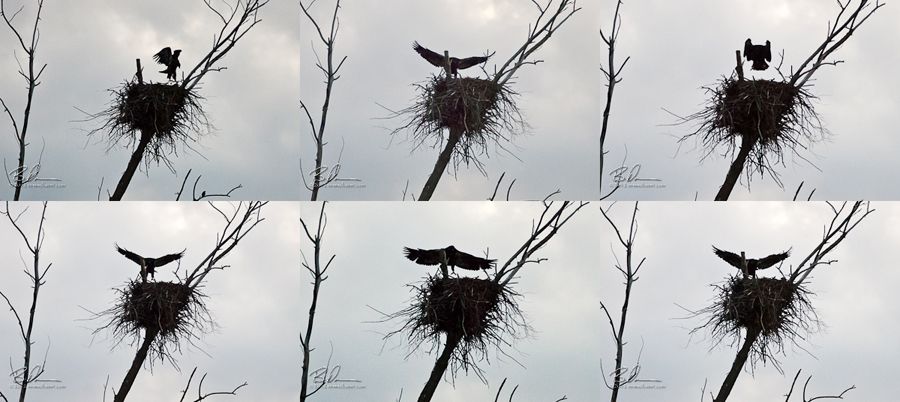
This is 292 catching some air while testing out those powerful wings on May 21st of this spring.
So, if you have a nest near your home, cabin, on your hunting land, etc, check the power poles and transformers to see if they have the proper safety devices installed. If not, contact the local utility provider and inform them of the nest and ask they check their poles and transformers to make sure the raptors will not be harmed. If it is your land, go get the numbers off the poles and provide them with a map of exactly where the nest is and in relation to their service line. The biggest thing is to follow up. Stay on them. Most utilities are very receptive to being "environmentally friendly" so I doubt there would be any resistance. Again, it's about doing the right thing! If you need help, don't hesitate to drop me an email at bill@mnwxchaser.com and I'll see what I can do to help out.
TRC has a very explicit policy regarding the posting of photos on social media sites, blogs, etc where the photos originate from a rescue. A lot of what we encounter does not need to be seen, as quite frankly, it is not pretty.
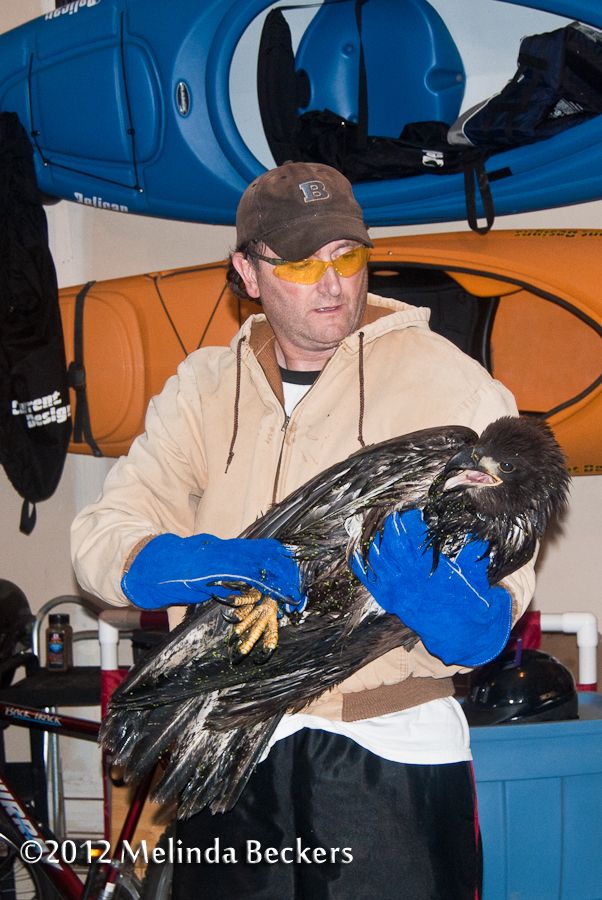
However, they made an exception for the use of this photo of 292. Thanks to Lori, Juli, and Nancie form TRC for accommodating my request. I wasn't sure what I was going to use for a caption or descriptive wording do drive home my point about what happened with this eagle, so I'm not going to. A lot of you are familiar with the Christmas Eve eagle rescue via kayak. That story was made thanks to Ken Knutson taking a photo. Although not even close to being as dramatic, this simple photo of me holding 292 makes a point. Had it not been for man (the power poles) and caring individuals such as the Beechers, the Popkins, and the Paripovichs, this photo wouldn't exist. With help from them and utility company, hopefully we can prevent another photo such as this from being taken.
As always, keep 'em flying.



No comments:
Post a Comment